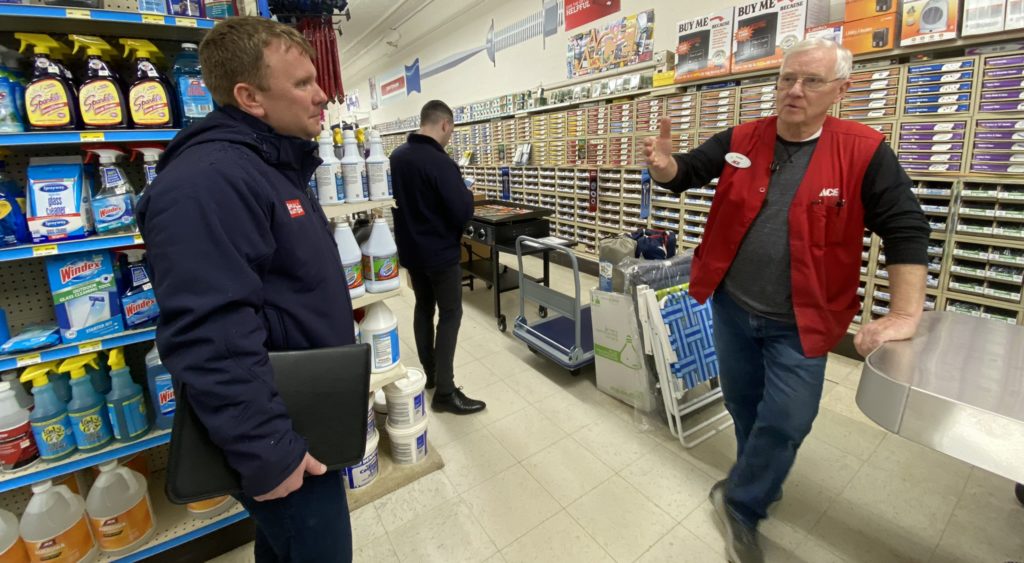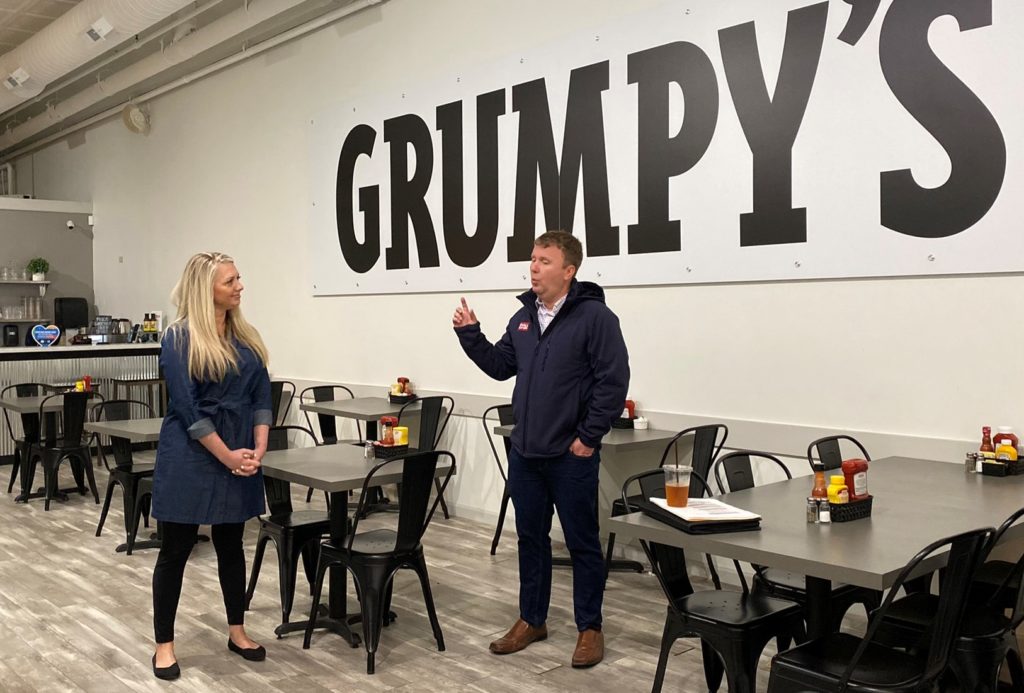By JAN LARSON McLAUGHLIN
BG Independent News
Downtown Bowling Green has features that other small cities only dream about, according to Jason Duff, founder of Small Nation. A college campus. Legacy businesses. New hip shops.
Small Nation is an organization responsible for the rebirth of downtown Bellefontaine. That group is now sharing its experience with other communities that know they can do better.
The key, according to Duff, is keeping legacy businesses and attracting new shop owners. And the secret to getting customers downtown can be summed up in three words: Vintage, funky and fun.
“We exist to help small towns, small businesses and small biz investors learn to take control of the down and turn it around – one dollar, one building, one business and one person at a time,” the Small Nation’s website states.
Duff recently toured downtown Bowling Green to study opportunities for improvement.

Community leaders gave Duff and his team a tour of businesses, and met with owners and managers to learn about this community, its history, and how it embraces Bowling Green State University.
“We met some of the business owners who are part of the DNA of the downtown,” Duff said, listing off Floyd Craft of Ben’s and Ace Hardware, Amy Craft-Ahrens of For Keeps, and Greg Halamay of Finders Records.
“Downtown Bowling Green has so many treasured business owners,” Duff said.
And they met with owners of new businesses, such as “Grumpy’s.”

And they talked with townies who came back to build in Bowling Green, like Zach and Chris Tracy, owners of Juniper Brewing Co.
In about 45 days, Duff and his team will give Bowling Green a report with their recommendations.
When Duff started his effort to revive his dying hometown, about 80% of Bellefontaine’s downtown storefronts were empty. That is not the story in Bowling Green – but city leaders believe BG can learn a lot from Bellefontaine’s success.
During Duff’s visit, Bowling Green leaders shared the success of the first Rally on Main event held last fall, designed to bring BGSU students and city residents together in the downtown.
“We talked about how to replicate that success and maybe do it more often,” Duff said. “We spent a lot of time talking about the town-gown relationship.”
They talked about becoming a community where BGSU students want to put down roots after graduation.
“Future entrepreneurs may be on the campus of BGSU,” Duff said.
And they discussed housing issues. “What type of housing do they need?” Duff said. “That’s a huge opportunity for Bowling Green.”

Among the topics the Small Nation report may address are:
- Better signage.
- Becoming more pedestrian friendly and safe.
- Type of businesses missing in the downtown.
- Ideas for empty storefronts.
Though Bowling Green and Bellefontaine share some similarities, there are distinct differences.
When Small Nation was started, its goal was to transform shuttered businesses into a vibrant downtown. Some businesses were boarded up. Some roofs were falling in. Some buildings were condemned.
Using a “hustle hard approach,” Bellefontaine has become a case study for small towns trying to survive by doubling down on the town’s history and investing in innovation, Duff said.
In six years, the Small Nation team renovated more than 30 historic buildings downtown, including 14 abandoned buildings. The effort attracted more than $17 million in new private investments.,
The “hustle hard” method has helped launch more than 30 new small businesses, including seven new downtown eateries and 17 new specialty retail stores. The effort has helped create approximately 200 jobs in the community.
Though far from Bellefontaine’s do-or-die situation, Bowling Green officials are hoping to glean ideas from Bellefontaine’s success. Last year, a group of city government and business leaders took a bus from BG to Bellefontaine to check out the downtown revival.
The cities are different in that Bellefontaine has about half the population of Bowling Green, is not home to a state university, and was in a dire position prior to the rescue attempts. But both cities share the struggles of smaller cities working to compete with larger neighbors.
In Bowling Green, much of the downtown revitalization has been a team effort between the city, community organizations, businesses, and property owners. In Bellefontaine, the bulk of the work was started by the private entity called Small Nation. It is credited for resuscitating the dying small town.
Since the visit to Bellefontaine, the Bowling Green team has been collaborating to connect property owners, investors, developers, and entrepreneurs in hopes that with Small Nation’s guidance, Bowling Green can continue to evolve and grow the downtown area while preserving its rich history and traditions.
“I think the visit highlights how fortunate we are to have a balance of businesses in our downtown that are unique, hardworking, and community and service oriented. They are valuable assets to the community that make Bowling Green a destination,” said Heather Sayler, planning director for the city of Bowling Green.
“Bowling Green has long understood, valued, and invested in its historic downtown. While it is important to celebrate and recognize the great things currently happening in our downtown, it is also healthy to assess other opportunities,” said Municipal Administrator Lori Tretter.
“There are many exciting initiatives ongoing or being considered in the downtown, including the recent announcement by the mayor to launch Heritage 2025. We look forward to participating with other downtown stakeholders and community members in exploring additional ways to enhance our community,” Tretter said.





